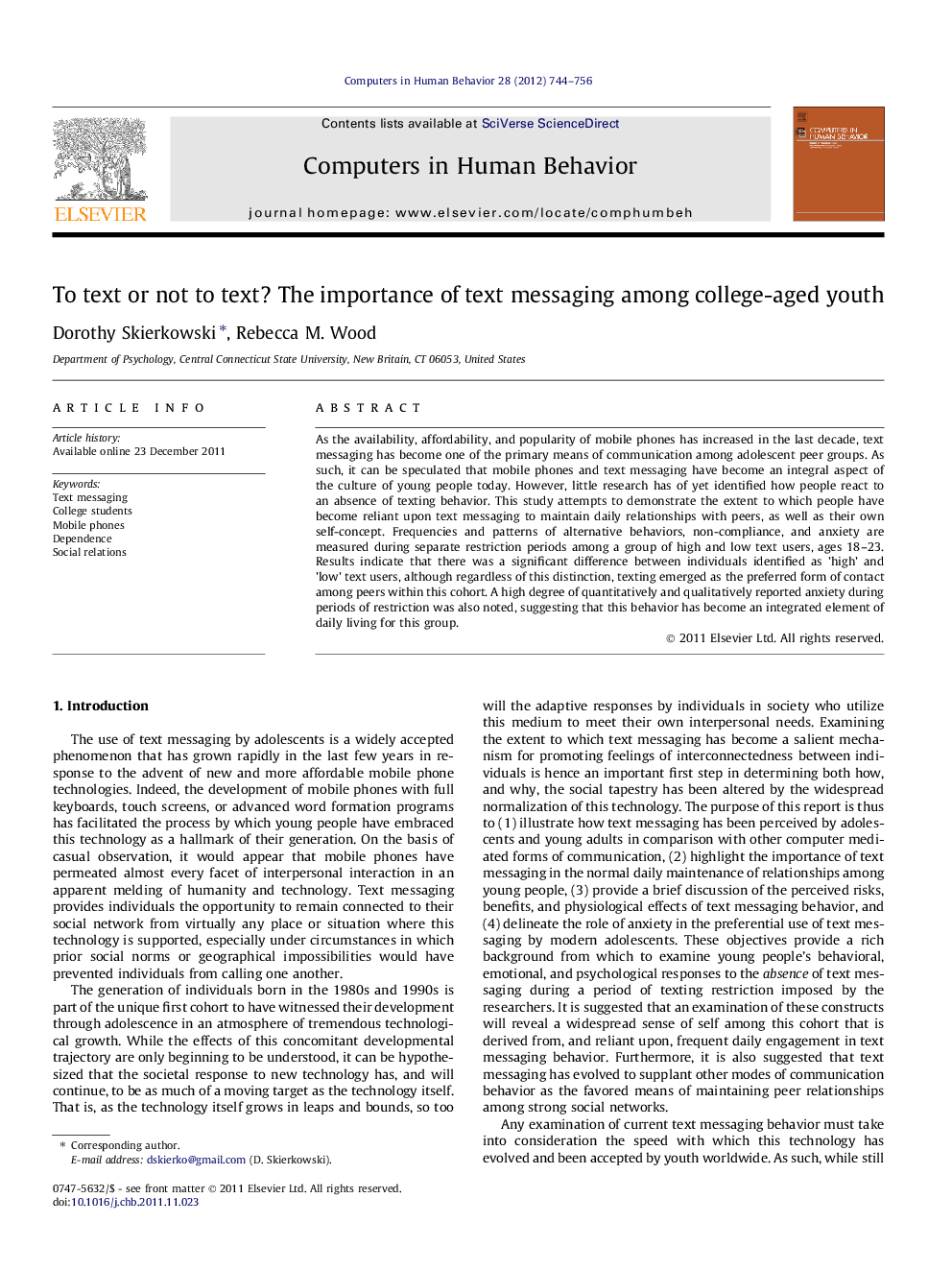| Article ID | Journal | Published Year | Pages | File Type |
|---|---|---|---|---|
| 351666 | Computers in Human Behavior | 2012 | 13 Pages |
As the availability, affordability, and popularity of mobile phones has increased in the last decade, text messaging has become one of the primary means of communication among adolescent peer groups. As such, it can be speculated that mobile phones and text messaging have become an integral aspect of the culture of young people today. However, little research has of yet identified how people react to an absence of texting behavior. This study attempts to demonstrate the extent to which people have become reliant upon text messaging to maintain daily relationships with peers, as well as their own self-concept. Frequencies and patterns of alternative behaviors, non-compliance, and anxiety are measured during separate restriction periods among a group of high and low text users, ages 18–23. Results indicate that there was a significant difference between individuals identified as ’high’ and ’low’ text users, although regardless of this distinction, texting emerged as the preferred form of contact among peers within this cohort. A high degree of quantitatively and qualitatively reported anxiety during periods of restriction was also noted, suggesting that this behavior has become an integrated element of daily living for this group.
► Text messaging is the primary form of communication among peers for college students. ► Restricted texting results in heightened anxiety for all text users. ► Non-compliance was common for participants in 3-day and 5-day restriction groups.
